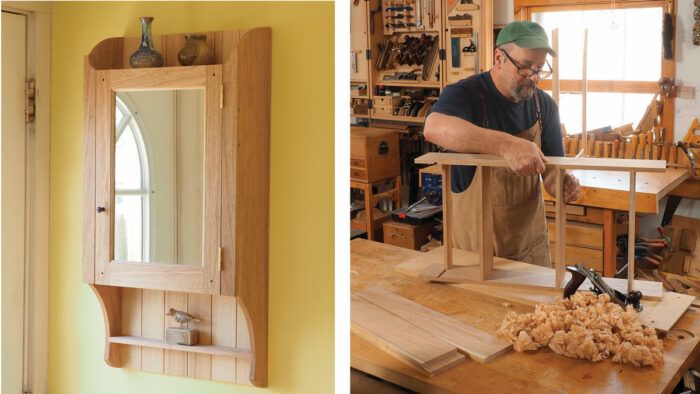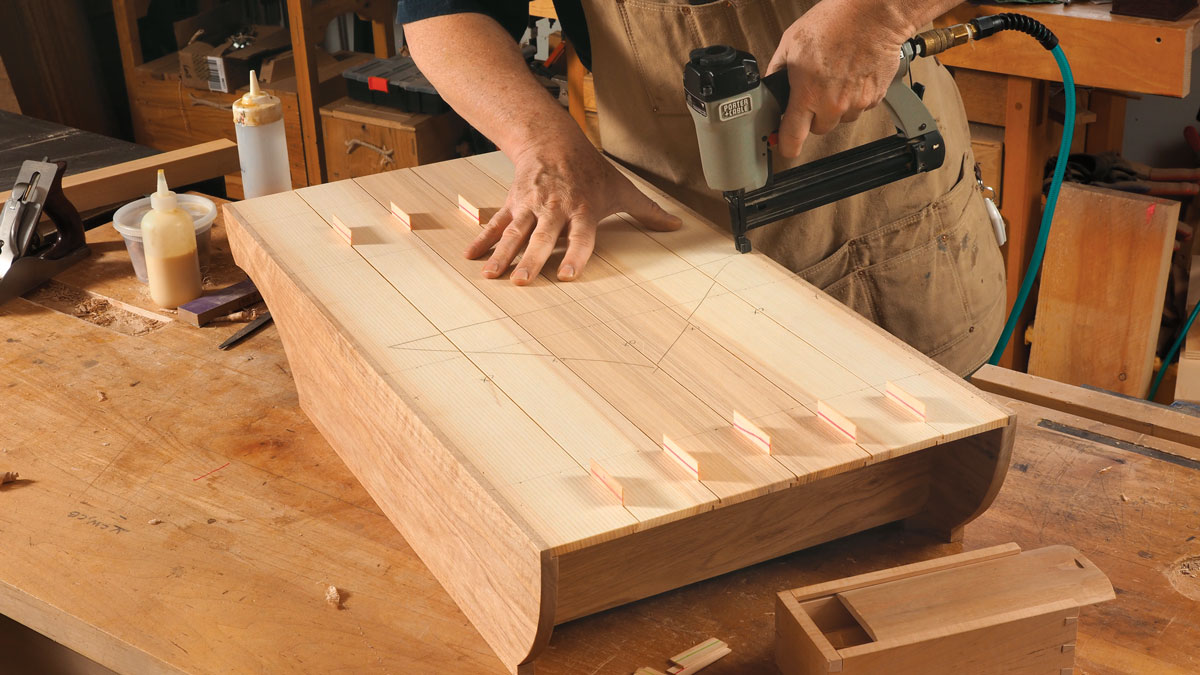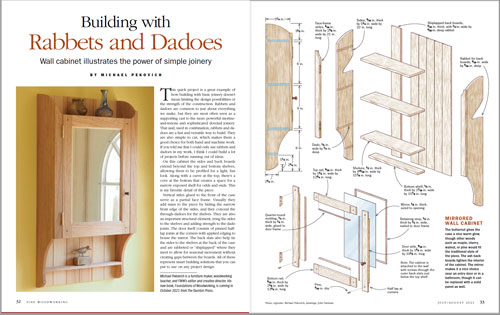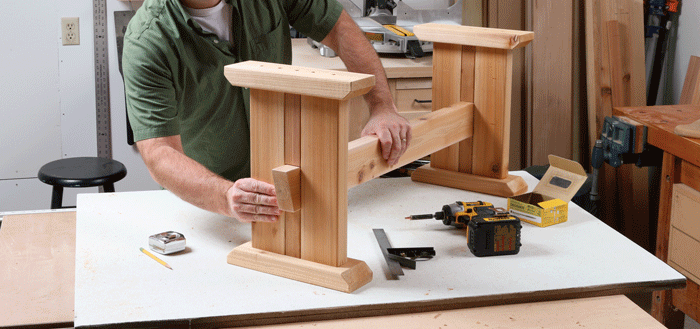Wall cabinet with simple joinery
Built with rabbets and dadoes, this cabinet incorporates plenty of smart building solutions that you can use in your own designs.

Synopsis: This wall cabinet shows clearly that you don’t need fancy joinery to design classic furniture. Built with rabbets and dadoes, with a shiplapped back and profiled sides and top, this cabinet incorporates plenty of smart building solutions that you can use in your own designs.
This quick project is a great example of how building with basic joinery doesn’t mean limiting the design possibilities or the strength of the construction. Rabbets and dadoes are common to just about everything we make, but they are most often seen as a supporting cast to the more powerful mortise-and-tenons and sophisticated dovetail joinery. That said, used in combination, rabbets and dadoes are a fast and versatile way to build. They are also simple to cut, which makes them a good choice for both hand and machine work. If you told me that I could only use rabbets and dadoes in my work, I think I could build a lot of projects before running out of ideas.
On this cabinet the sides and back boards extend beyond the top and bottom shelves, allowing them to be profiled for a light, fun look. Along with a curve at the top, there’s a cove at the bottom that creates a space for a narrow exposed shelf for odds and ends. This is my favorite detail of the piece.
Vertical stiles glued to the front of the case serve as a partial face frame. Visually they add mass to the piece by hiding the narrow front edge of the sides, and they conceal the through-dadoes for the shelves. They are also an important structural element, tying the sides to the shelves and adding strength to the dado joints. The door itself consists of pinned half-lap joints at the corners with applied edging to house the mirror. The back slats also help tie the sides to the shelves at the back of the case and are rabbeted or “shiplapped” where they meet to allow for seasonal movement without creating gaps between the boards. All of these represent smart building solutions that you can put to use on any project design.

Fast case construction with rabbets and dadoes
It’s important that the dadoes on the two case sides are aligned. One way to get consistent results is to use an end stop on a crosscut sled. Another solution, which works for narrower parts, is to cut both at once. That’s what I did here. Place the parts side by side with their ends aligned and stretch tape across the joint in a few locations (1). This does a good job of keeping the sides in alignment during the cut. Using this method, all you need to do is mark the dado locations on the edge of one piece and align the pencil marks with the kerf in the crosscut sled (2).
 From Fine Woodworking #290
From Fine Woodworking #290
To view the entire article, please click the View PDF button below.
Cabinets: Our Favorite Articles
Wall Cabinet with Curves
How To Build An Arts and Crafts Wall Shelf
Fine Woodworking Recommended Products

Blum Drawer Front Adjuster Marking Template








Comments
This is a really nice design. What would be the preferred method for attaching it to the wall. The picture looks flush with the wall but it doesn't look like there's room for French cleats in this design. thanks
Log in or create an account to post a comment.
Sign up Log in